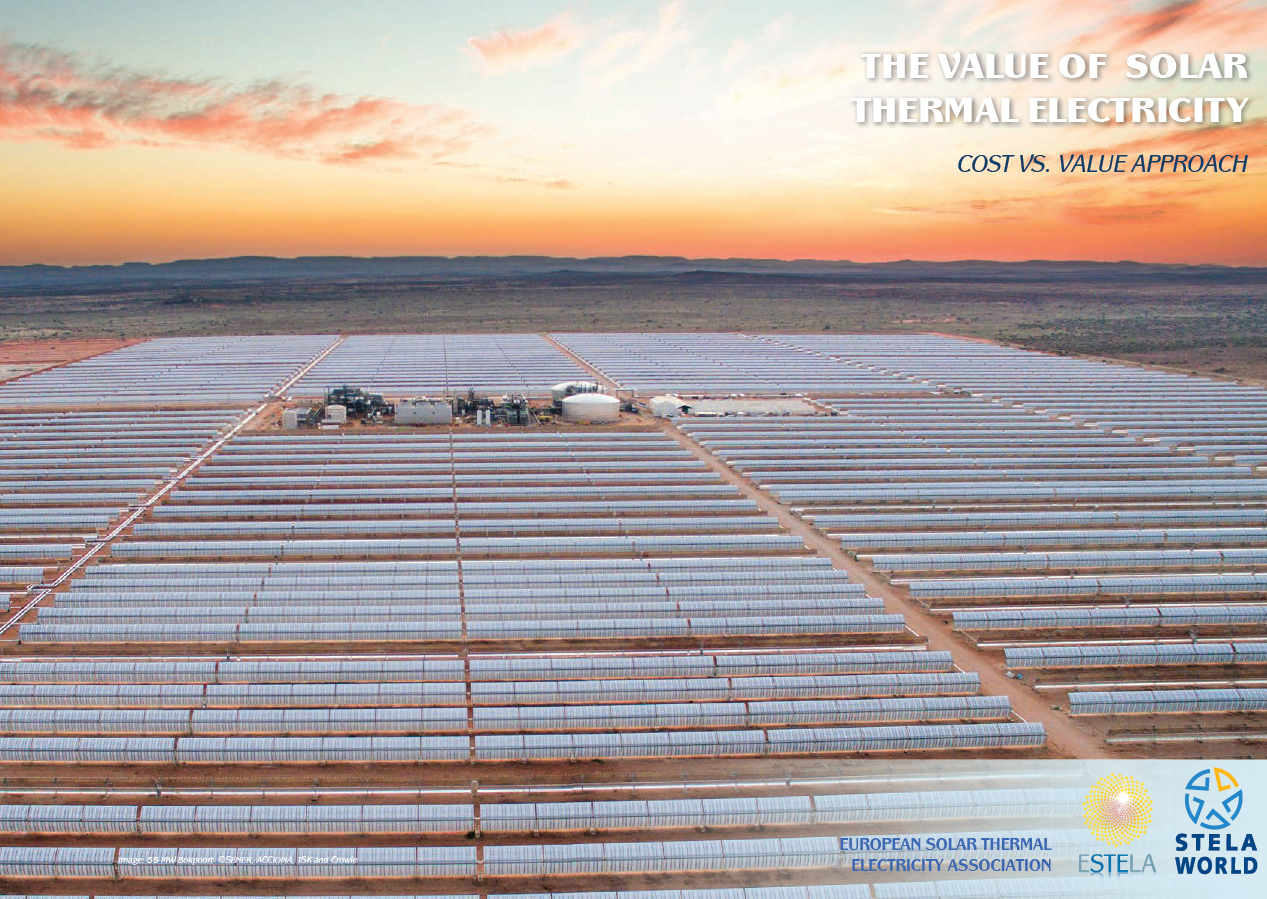
22 Apr FOR A SUSTAINABLE ENERGY TRANSITION: Value Approach Prevails over Cost Approach
Brussels, 22nd April, 2016. Following the initial phase (2005-2015) of RES penetration in the European power system, time has come to face facts: firstly, there are two types of renewables: one is the cheaper non-dispatchable, the other one is the still-more-expensive dispatchable technology such as solar thermal electricity (also known as concentrated solar power). While grid integration became an issue for non-dispatchable sources, dispatchable renewable sources are set to solve the challenge of integrating even more renewables up achieving a CO2-free power system. This is what the difference between cost and value of the various renewable technologies is about.
The guiding principle for further investment steps towards a sustainable energy transition should not only be how much a generated kWh in a given power plant costs in terms of CAPEX/OPEX. Instead, the value it effectively adds to the system should be from now on the essential factor for deciding on investments. For a power system, this value results essentially from the storage capacities of a new plant and can be expressed both in operational terms (effective operation hours, costs for re-dispatching, contribution to system services, induced generation curtailment, etc.) and in terms of added capacity (investments avoided to cover demand in all time-frames on top of the investment of the new plant itself). “Beyond the mere impact on the power system, industry policy, employment and technology leadership aspects must also be duly valued by political decision-makers,” says Dr. Luis Crespo, Vice-President of STELA World and President of ESTELA.
Today the European Solar Thermal Electricity Association (ESTELA), together with the World Solar Thermal Electricity Association (STELA World) presented two policy papers, titled “The Value of Solar Thermal Electricity” and “The Value of Thermal Storage”, aiming at addressing these issues and bringing a new perspective to look beyond LCOEs. “The metric of LCOE may be useful for academic purposes, but it is no longer supportive of a longer-term energy policy-making resulting in system planning decisions and support schemes,” commented Marcel Bial, Secretary General of ESTELA. These two papers compare different approaches to storage, highlighting the significant advantages brought by dispatchable STE (CSP).
| The Value of Solar Thermal Electricity | The Value of Thermal Storage |
|
|
|
| Download Paper | Download Paper |



